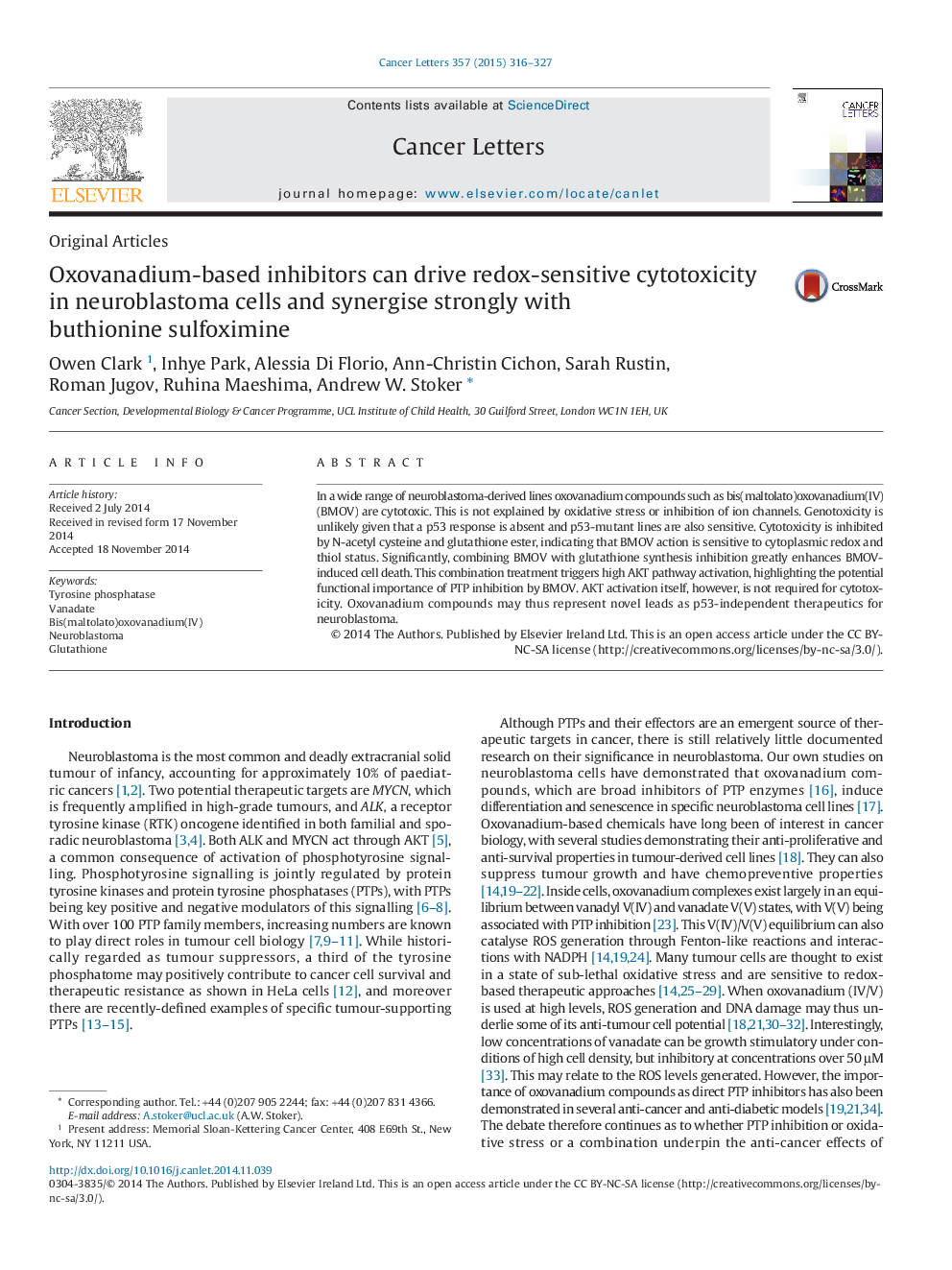| کد مقاله | کد نشریه | سال انتشار | مقاله انگلیسی | نسخه تمام متن |
|---|---|---|---|---|
| 10899593 | 1084396 | 2015 | 12 صفحه PDF | دانلود رایگان |
عنوان انگلیسی مقاله ISI
Oxovanadium-based inhibitors can drive redox-sensitive cytotoxicity in neuroblastoma cells and synergise strongly with buthionine sulfoximine
ترجمه فارسی عنوان
مهار کننده های مبتنی بر اکسانوادیم می توانند سمیت سلولی حساس به حساسیت زدایی را در سلول های نوروبلاستوما و قویا با بوته یون سولفسیمین
دانلود مقاله + سفارش ترجمه
دانلود مقاله ISI انگلیسی
رایگان برای ایرانیان
کلمات کلیدی
موضوعات مرتبط
علوم زیستی و بیوفناوری
بیوشیمی، ژنتیک و زیست شناسی مولکولی
تحقیقات سرطان
چکیده انگلیسی
In a wide range of neuroblastoma-derived lines oxovanadium compounds such as bis(maltolato)oxovanadium(IV) (BMOV) are cytotoxic. This is not explained by oxidative stress or inhibition of ion channels. Genotoxicity is unlikely given that a p53 response is absent and p53-mutant lines are also sensitive. Cytotoxicity is inhibited by N-acetyl cysteine and glutathione ester, indicating that BMOV action is sensitive to cytoplasmic redox and thiol status. Significantly, combining BMOV with glutathione synthesis inhibition greatly enhances BMOV-induced cell death. This combination treatment triggers high AKT pathway activation, highlighting the potential functional importance of PTP inhibition by BMOV. AKT activation itself, however, is not required for cytotoxicity. Oxovanadium compounds may thus represent novel leads as p53-independent therapeutics for neuroblastoma.
ناشر
Database: Elsevier - ScienceDirect (ساینس دایرکت)
Journal: Cancer Letters - Volume 357, Issue 1, 1 February 2015, Pages 316-327
Journal: Cancer Letters - Volume 357, Issue 1, 1 February 2015, Pages 316-327
نویسندگان
Owen Clark, Inhye Park, Alessia Di Florio, Ann-Christin Cichon, Sarah Rustin, Roman Jugov, Ruhina Maeshima, Andrew W. Stoker,
